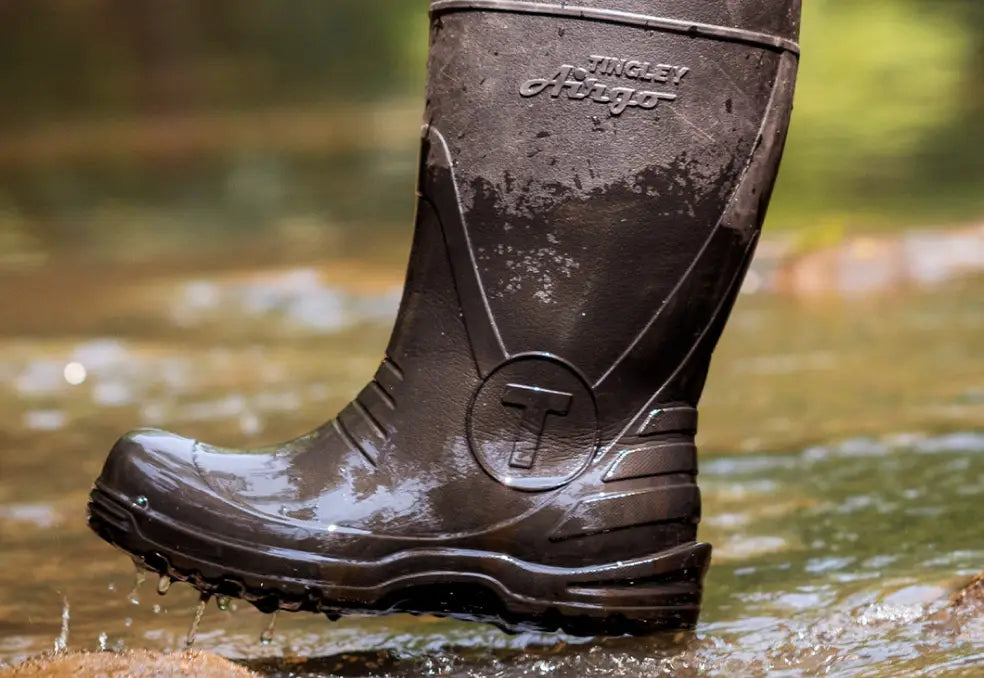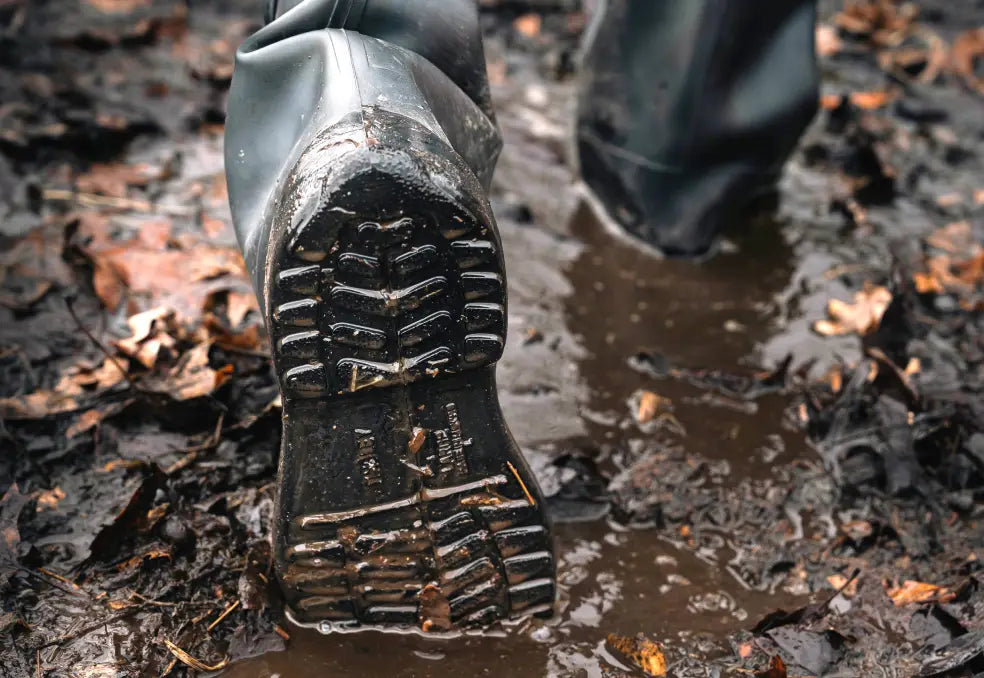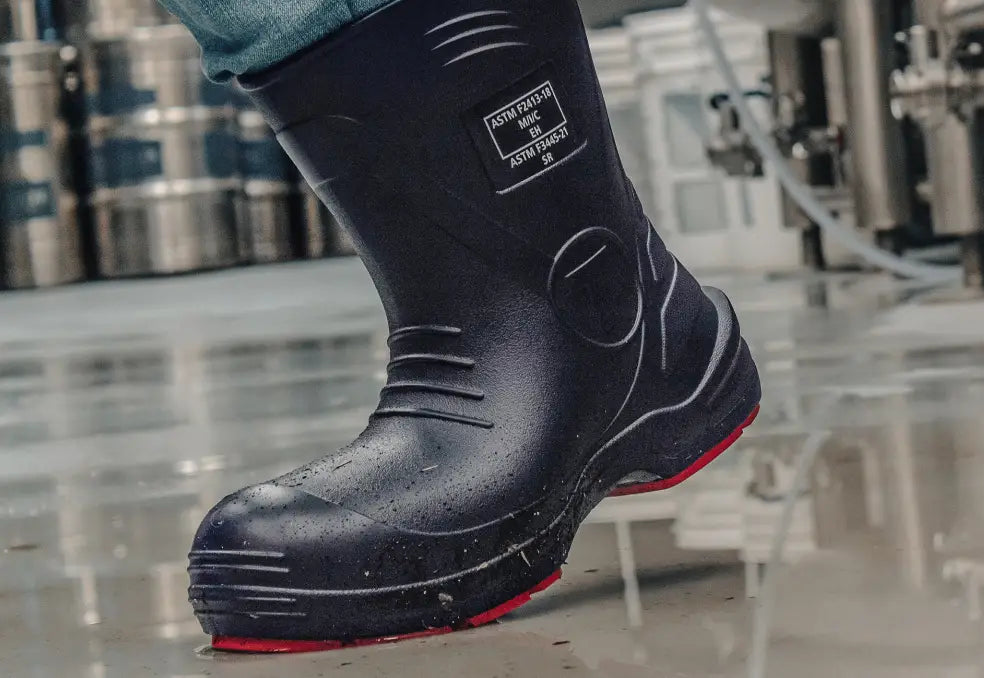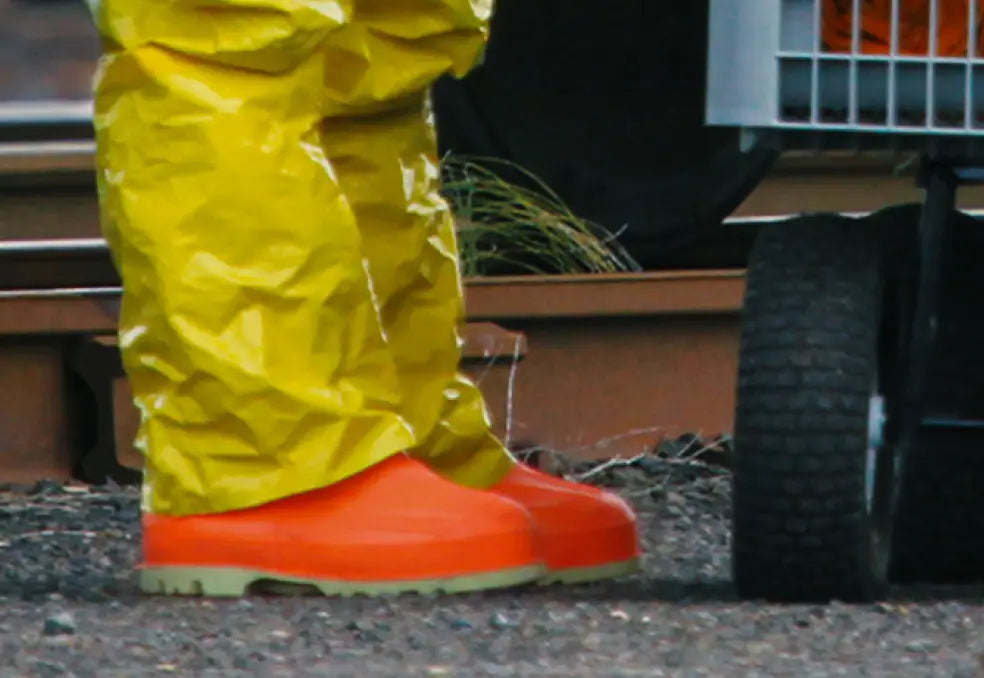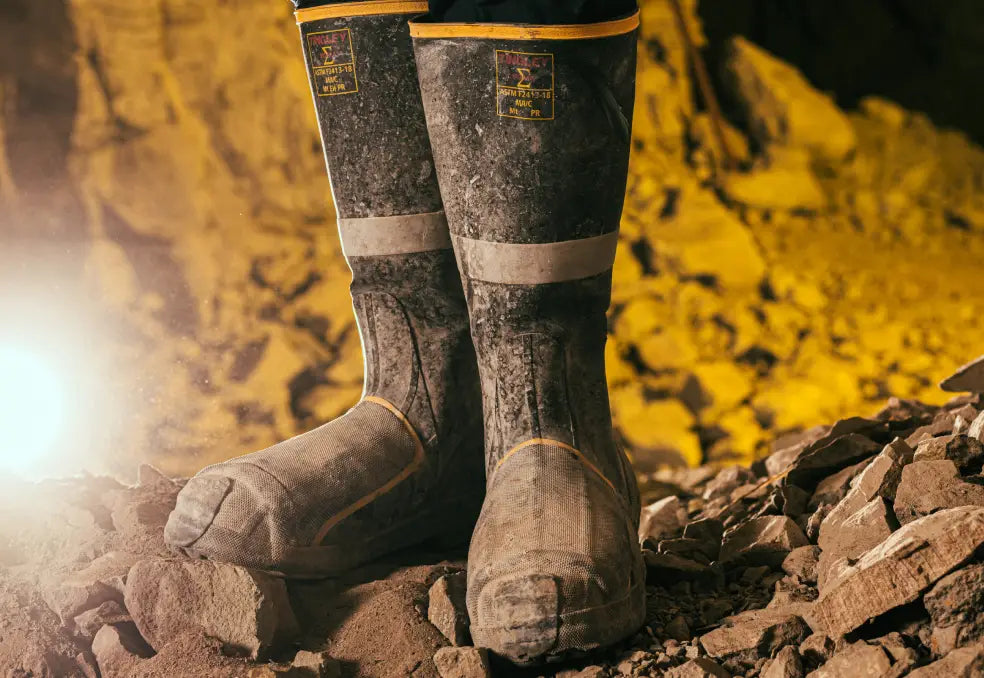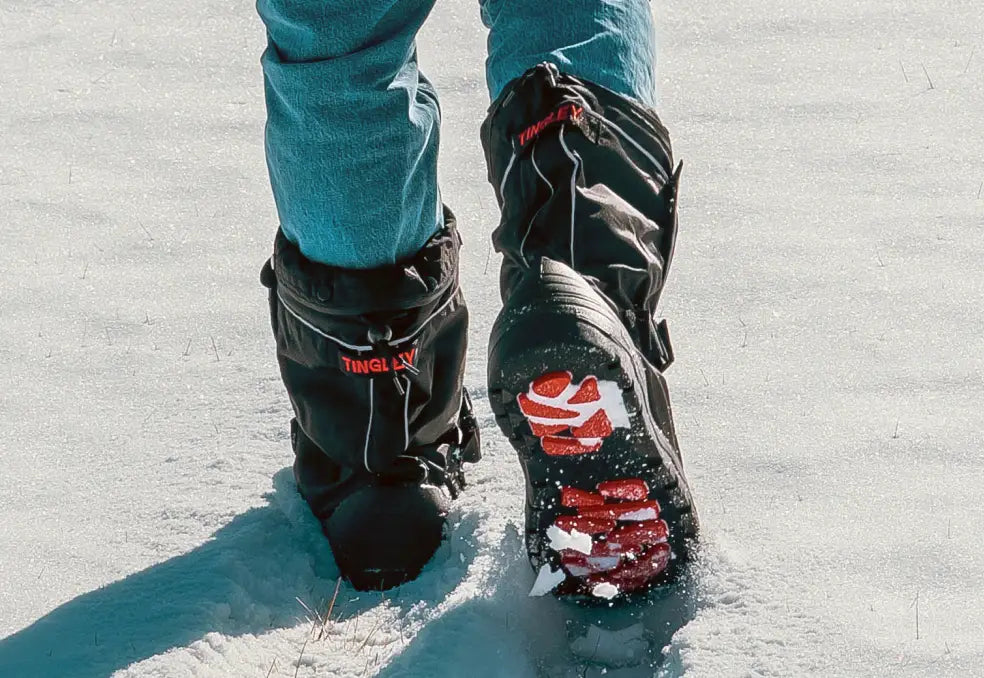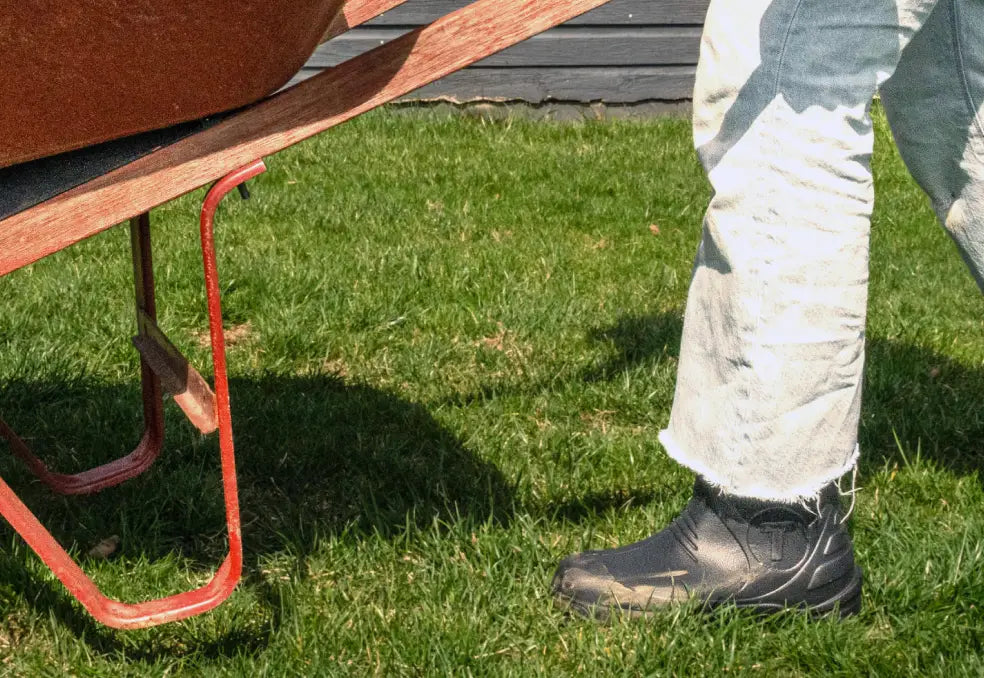
FOOTWEAR
Tingley safety footwear sets the standard for protection and comfort. Our industrial work boots, safety shoes and steel toe boots are designed to withstand the toughest environments, providing slip resistance, waterproof protection and exceptional comfort to get the job done.
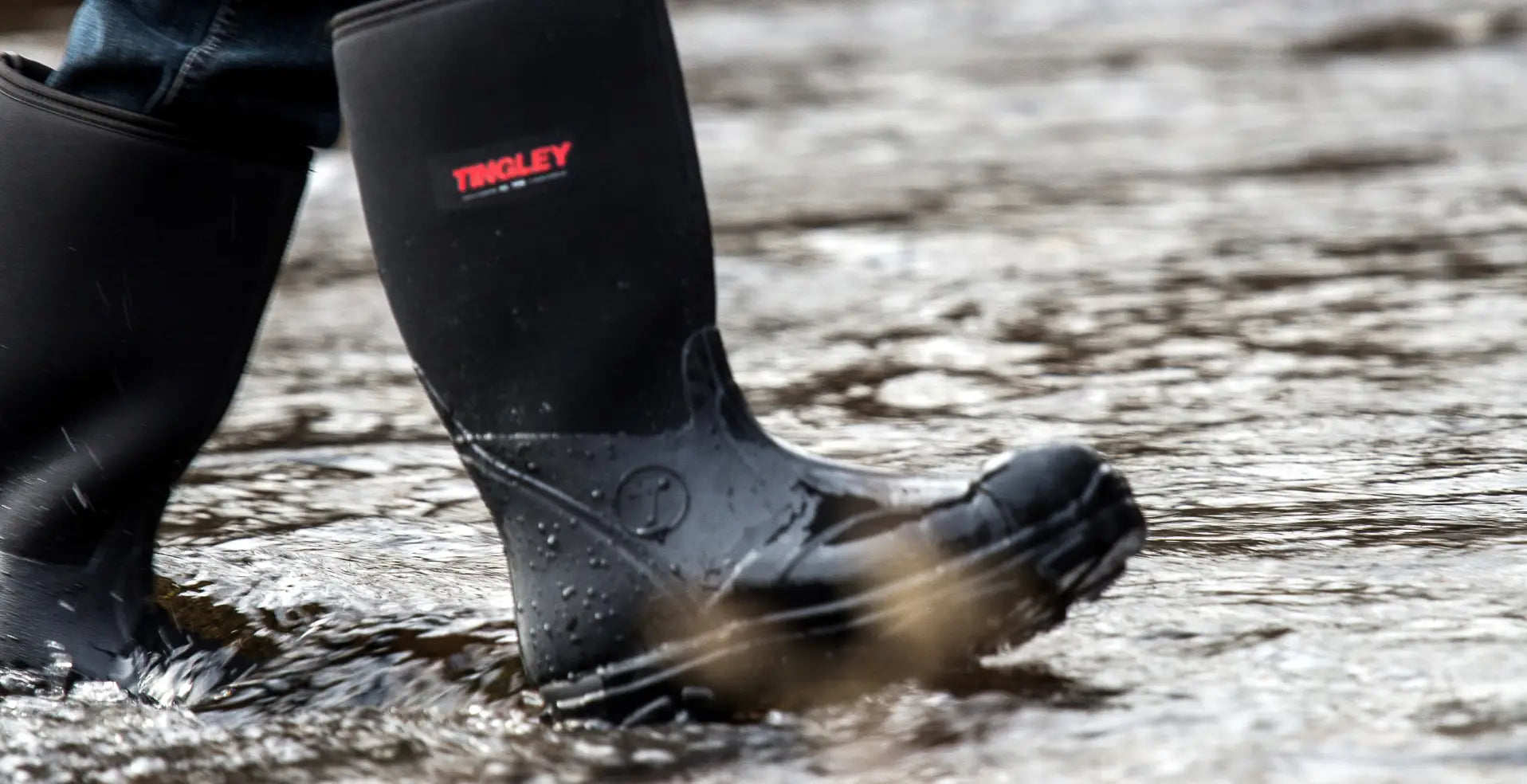
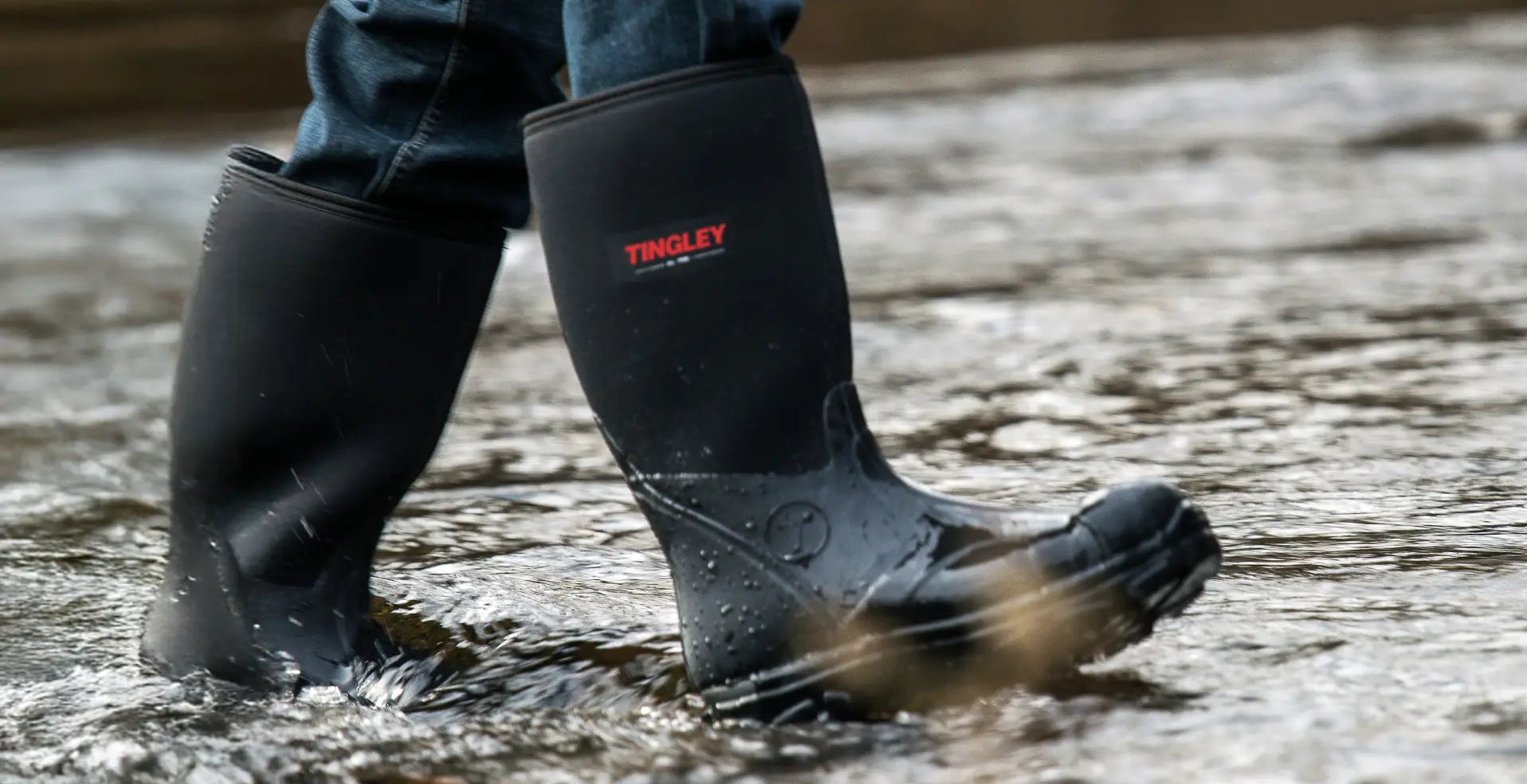
Frequently Asked Questions
1.
What is the difference between overshoes and work boots?
Overshoes slip over your regular shoes or work boots to provide waterproof and chemical-resistant protection. They do not replace your existing footwear.
Work boots are standalone shoes designed for safety and durability. Tingley offers both options to match your work environment and protection needs.
2.
How do I size overshoes to fit over my work boots?
Measure your current footwear and compare it to Tingley’s sizing chart. Choose overshoes that provide extra room for your boots. If you wear steel-toed boots, select overshoes designed to stretch over bulky toe caps. When unsure, size up for a comfortable fit.
3.
How do I determine which safety ratings I need for boots?
Review your workplace safety requirements and ASTM standards. Tingley offers boots with steel toes, electrical hazard, chemical resistance and slip-resistant ratings.
4.
How do I clean and maintain rubber boots and overshoes?
Rinse off mud, chemicals and debris with water after each use. Use mild soap and a brush for stubborn dirt. Dry boots away from direct sunlight or heat. Store them in a cool, dry place. Inspect regularly for cracks, punctures or worn areas and replace damaged boots immediately.
5.
What is the difference between rubber and PVC boots?
Rubber boots offer flexibility, chemical resistance and durability in cold weather conditions. PVC boots are lightweight, easy to clean, and affordable. Rubber boots excel in harsh conditions and chemical exposure, while PVC boots work well for general waterproof protection.
6.
Do Tingley boots provide electrical hazard protection?
Yes. Many Tingley boots have electrical hazard (EH) ratings to help protect against electrical shock. Check the product’s safety ratings to confirm it meets OSHA and ASTM F2413 standards for your workplace. Read our blog article to learn more.
7.
Why are rubber boots better for wet or chemical environments?
Rubber boots deliver superior waterproofing, chemical resistance, and easy cleanup compared to leather or fabric boots. Tingley rubber boots are suitable for agriculture, food processing, chemical handling and any environment with mud, rain or liquid chemicals.
8.
What is the difference between steel toe and composite toe boots?
Steel-toe boots feature a steel cap that protects your toes from impact and compression. Composite toe boots use non-metal materials like Kevlar, carbon fiber or plastic. Composite toes are lighter, non-conductive and pass through metal detectors. Read our blog article to learn more.
9.
What boot height should I choose for my work?
Choose ankle-height boots for light splash protection. Select mid-calf boots (10–12 inches) for general farm or construction work. Knee-high boots are ideal for navigating deep water, heavy mud or standing water. Choose hip boots for wading, floods or water above your knees.
10.
Do Tingley boots come in wide widths?
Check the product details, as width availability varies by model. Many Tingley boots and overshoes have a roomy fit. Enlarged fit models provide extra space for wide feet.


